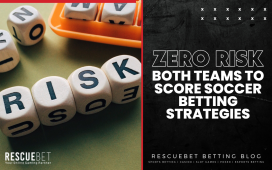Punters need to grasp statistics, probability, and numerical analysis in blackjack betting. A punter making statistical wagers based on math and probability is more likely to be successful than a punter not making math-based wagers in the long run. The math behind blackjack helps punters understand the rules and regulations of the game, the best strategies to adopt, when to use a system, and how to win more consistently. Since blackjack is a point-based game between the house and the punter, math is an essential component in blackjack.
Math In Blackjack
Blackjack and math go together as some of the most proficient punters use math and statistical methods to make blackjack wagers. Some of the math behind blackjack or 21 includes when to hit or double, statistical 16, house cards, bets on high or low, and different cards worth different points.
1. 21 Points
The objective of a blackjack round is to get to a maximum of 21 points, or somewhere close to it. 21 or points closer to 21 give a punter the highest probability of beating the house. A player’s highest points on the first two cards are 21, including an Ace and a 10 (or Jack, Queen, King). On 21 points, a punter wins extra money on blackjack hands. However, a punter can also draw with the house if they have equal points.
2. Hit Or Double On Ten Or Below
A punter should hit or double 10 points on the first two cards. If a punter hits, they can’t go bust because the maximum points they get on one card is 11, making 21. Below 10 points, punters should consider only hitting and not doubling. A punter should consider doubling or hitting anything above ten or less than ten based on the house’s cards. Knowing when to hit and stand differentiates a good punter from an average punter.
3. Statistical 16
16 is a confusing number or total to have in blackjack. A punter would want to hit because they feel 16 isn’t enough to beat the house, while another punter may not want to hit because they may go over 21 and go bust (lose automatically irrespective of the cards the house has). A punter should consider the cards the house has because if the house has less than six on the first hand, the punter should ideally stand, and if the house has more than 6, the punter should consider hitting again.
4. Calculate Based On The House
While a punter can always calculate their total and estimate the following cards, a punter must also consider the house’s cards. Following the points and probabilities of the house gives a punter a complete picture of how the game of 21 will most probably end. A game of 21 can end with the home winning, the player winning, or in a draw. If it’s a tie, a punter has their wager returned to them but didn’t win anything from the house.
5. High Or Low
Punters can estimate whether the next card will be high or low before making a wager. Another example is counting cards and making statistical estimations about the result of each round. While counting cards is challenging and a bannable offense, punters could learn about its concept and how to count cards in blackjack games. Counting cards also trains a punter to make better blackjack decisions in a game.
6. Different Points
Each card is worth different points, with cards from 2-9 representing each number on the card, 10-king all are worth 10 points, and use the ace as 11 or as one depending on what’s more convenient for the punter. Punters can split cards, double down, fold, or hit, depending on the total points accumulated on the table and separate two identical cards. However, not all cards of the same type should be divided. For example, breaking two 2s may be more harmful than helpful as a punter needs to increase their stake while starting with two points on each hand.
























